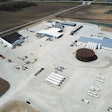
Does your feed and grain business have a budget? Perhaps you prepare one every year, created one in the past but no longer do so, or have never gone through the budgeting process. Regardless of your approach, deciding whether to budget is often a matter of weighing costs versus benefits. Is the effort of creating and managing a budget worth the advantages it offers?
The benefits of budgeting are numerous, including:
- Identifying areas of excessive spending, enabling better financial management.
- Providing a framework for informed decision-making, particularly when it comes to investments and resource allocation.
- Facilitating proactive management, helping to maximize profits and achieve financial goals.
- Preparing your business for economic challenges, such as downturns or unexpected expenses.
These benefits collectively ensure that your feed and grain business remains on track to meet its objectives and operate with greater financial efficiency.
Business budgeting basics
At its core, budgeting involves identifying and estimating income (revenue), fixed costs (expenses that remain stable) and variable costs (expenses that fluctuate with business activity). A budget acts as a blueprint for managing cash flow and allocating resources to cover essential expenses while pursuing financial goals.
While this might sound straightforward, the details can be complex. Your budget is only as accurate and useful as the numbers it’s built on, and creating those numbers often requires careful thought, analysis and a solid understanding of your business operations.
Here are the steps to creating a business budget:
1. Analyze past performance
The first step in budgeting is to examine your business's historical performance. Review recent financial statements to identify income trends and recurring expenses. This analysis offers valuable insights into your business’s strengths and challenges, helping you build realistic projections.
2. Estimate future revenue
Because budgeting involves planning for the future, the next step is to list and estimate all potential sources of income. For a feed and grain business, this may include sales of feed products, grain storage fees, or secondary revenue streams such as equipment rentals or investments. Use historical data and market trends to guide your estimates.
3. Identify fixed costs
Fixed costs are expenses that remain constant regardless of your business’s activity levels. Examples include rent, mortgage payments, salaries and insurance premiums. By identifying these costs, you can ensure they are accounted for in your budget and plan for them accordingly.
4. Estimate variable costs
Variable costs, on the other hand, fluctuate depending on your business volume. For example, a grain elevator’s variable costs might include utilities, labor for handling grain and marketing. Similarly, a feed mill’s variable costs may include the price of feed ingredients or commissions paid to salespeople. Accurately forecasting these expenses is key to creating a reliable budget.
5. Categorize your budget
Organizing expenses into categories is one of the most useful exercises in budgeting. Common categories for a feed and grain business might include labor, inventory, marketing and administrative costs. Assigning specific dollar amounts to each category based on projections allows for greater clarity and easier tracking.
6. Monitor and adjust regularly
A budget is not a static document; it’s a tool for ongoing management. Regularly compare your actual income and expenses to your budget. If discrepancies arise, adjust your plans accordingly — whether by increasing efforts to generate revenue or cutting back on expenses in specific areas.
Tools to simplify budgeting
Many businesses rely on spreadsheets to create and manage their budgets. Tools like Microsoft Excel offer templates tailored for small businesses, such as the simple annual budget template found at http://bit.ly/4031L3E.
For those seeking additional functionality, automation tools like Zapier’s budget templates can streamline the process further without requiring advanced technical skills. These tools can make creating and maintaining a budget easier and more efficient.
Adapting budgets to a changing market
Budgeting isn’t just about creating a plan — it’s about adapting to an ever-changing business environment. A recent Harvard Business Review article by Nadya Zhexembayeva highlights the importance of flexibility in budgeting. She suggests three strategies to navigate uncertainties:
- Set flexible goals: Instead of a fixed target, such as a 10% increase in profits, aim for a range (e.g., 8% to 12%). This allows for adjustments based on market fluctuations.
- Define spending limits: Establish predefined thresholds for certain budget categories to simplify decision-making when changes are needed.
- Shorten budget cycles: In volatile conditions, consider bi-annual or even quarterly budgets instead of annual ones to stay aligned with market realities.
By making these adjustments, you can ensure your budget remains relevant and useful even in a dynamic environment.
Is budgeting worth it?
Deciding whether to invest time and resources into budgeting depends on your business's unique needs. As feed and grain businesses grow in complexity — whether in terms of revenue, number of employees or locations—the benefits of budgeting often outweigh the costs. A budget provides greater control over your operations, highlights inefficiencies and equips you to respond proactively to challenges.
Even if your business operates on a smaller scale, budgeting can still offer valuable insights into spending patterns, profitability and growth opportunities. Ultimately, the decision boils down to whether budgeting improves your ability to manage your business and achieve your financial goals. If it does, the process is undoubtedly worthwhile.
Budgeting isn’t just about numbers. It’s about control, clarity and confidence. A well-crafted budget can act as a roadmap for achieving financial success, helping your feed and grain business allocate resources wisely, adapt to challenges, and seize opportunities. While it requires effort to create and maintain, the insights and benefits it delivers can make it a vital tool for long-term growth and profitability.
Whether your business is just starting out or has been thriving for decades, budgeting is a practice worth considering — or revisiting — to ensure you’re always steering toward success.

















